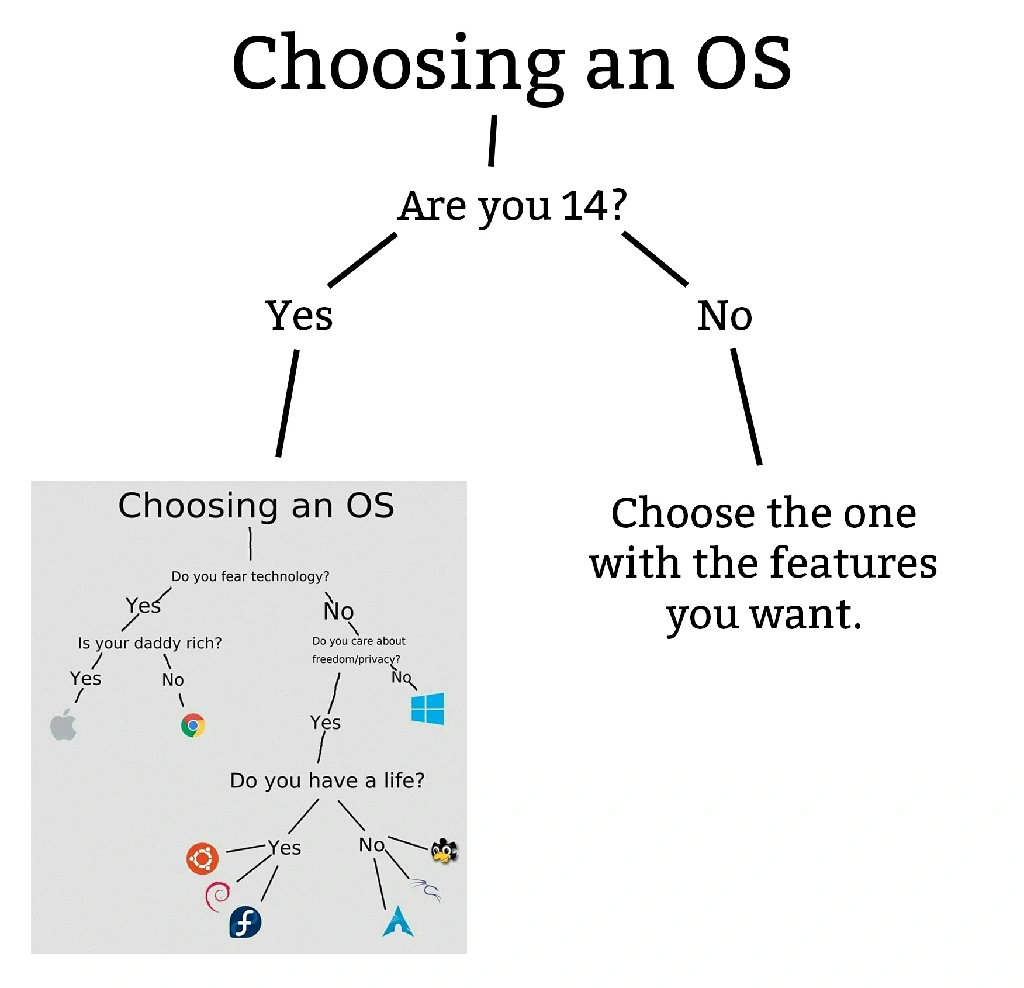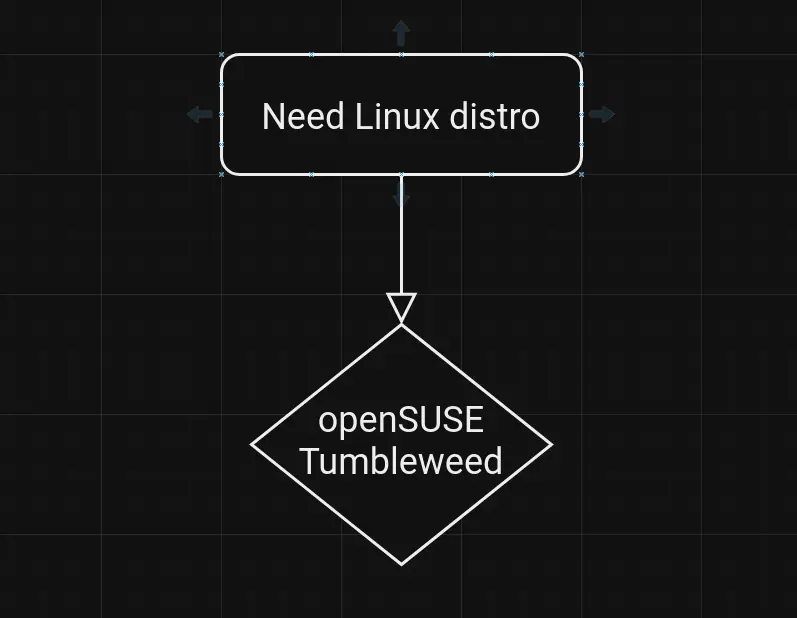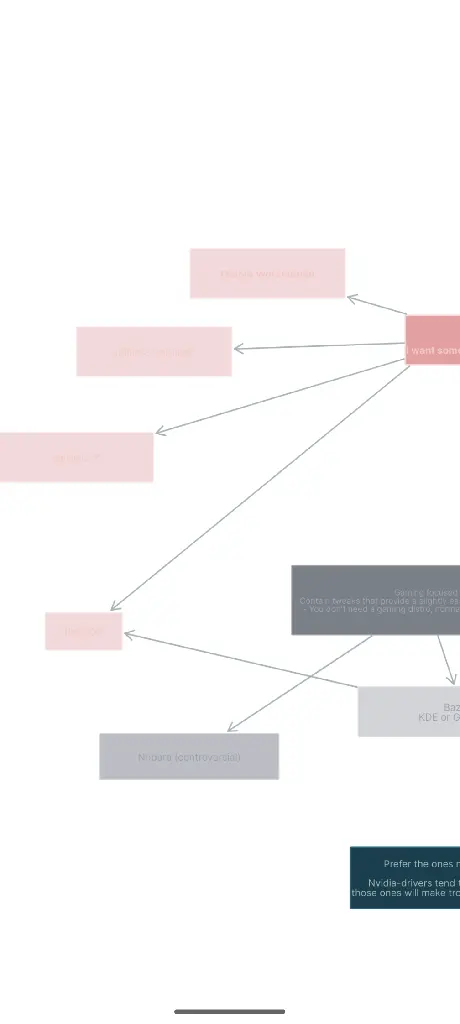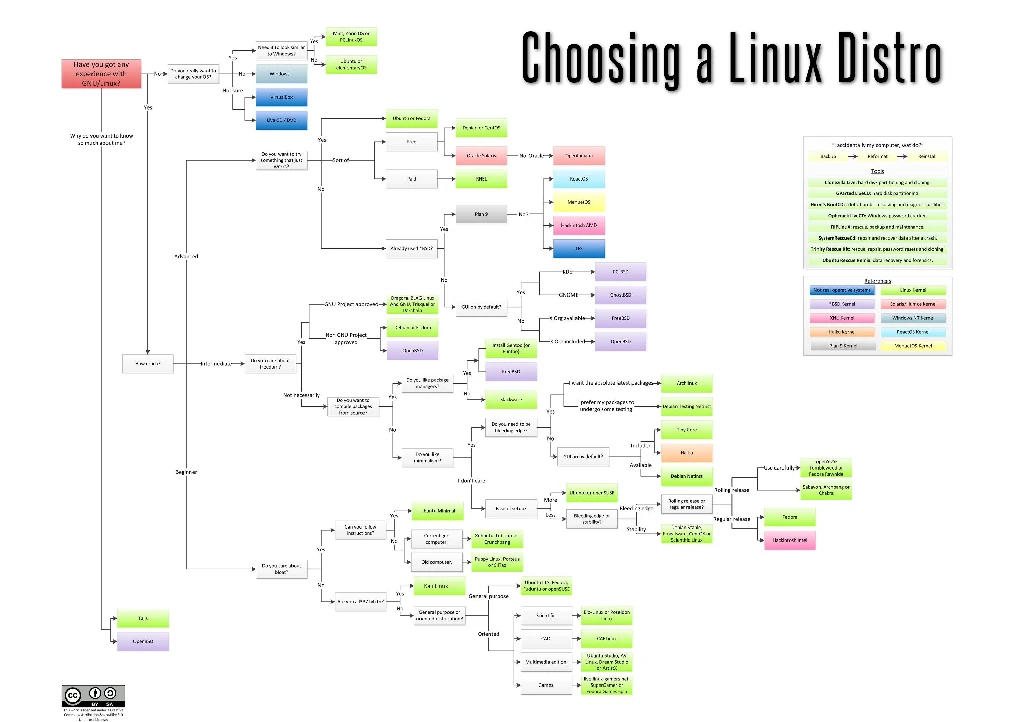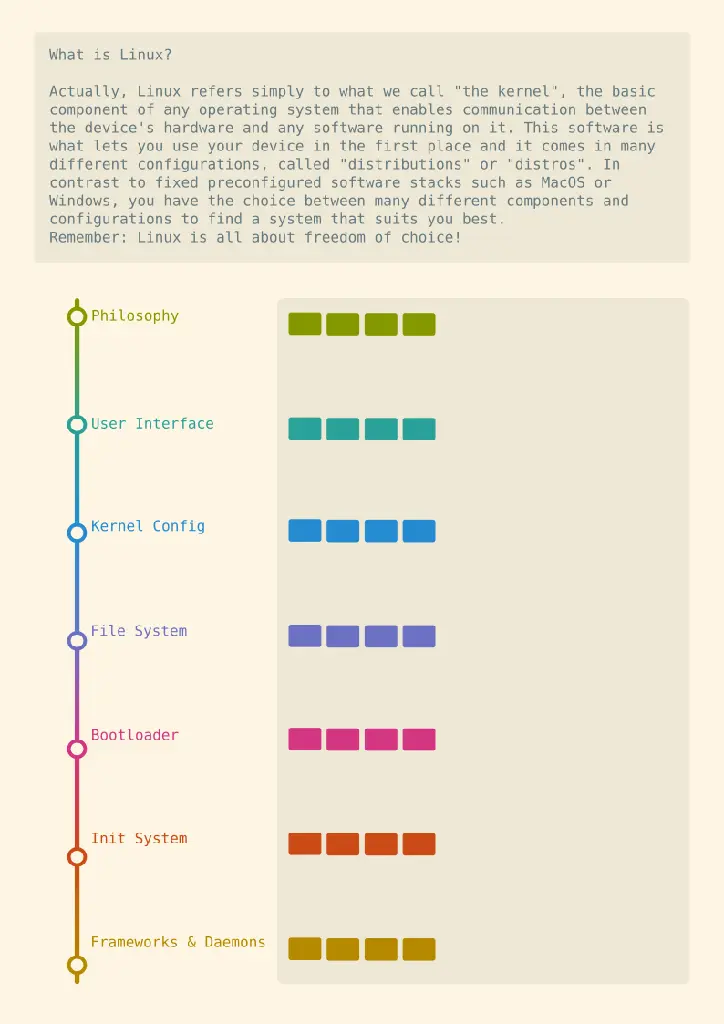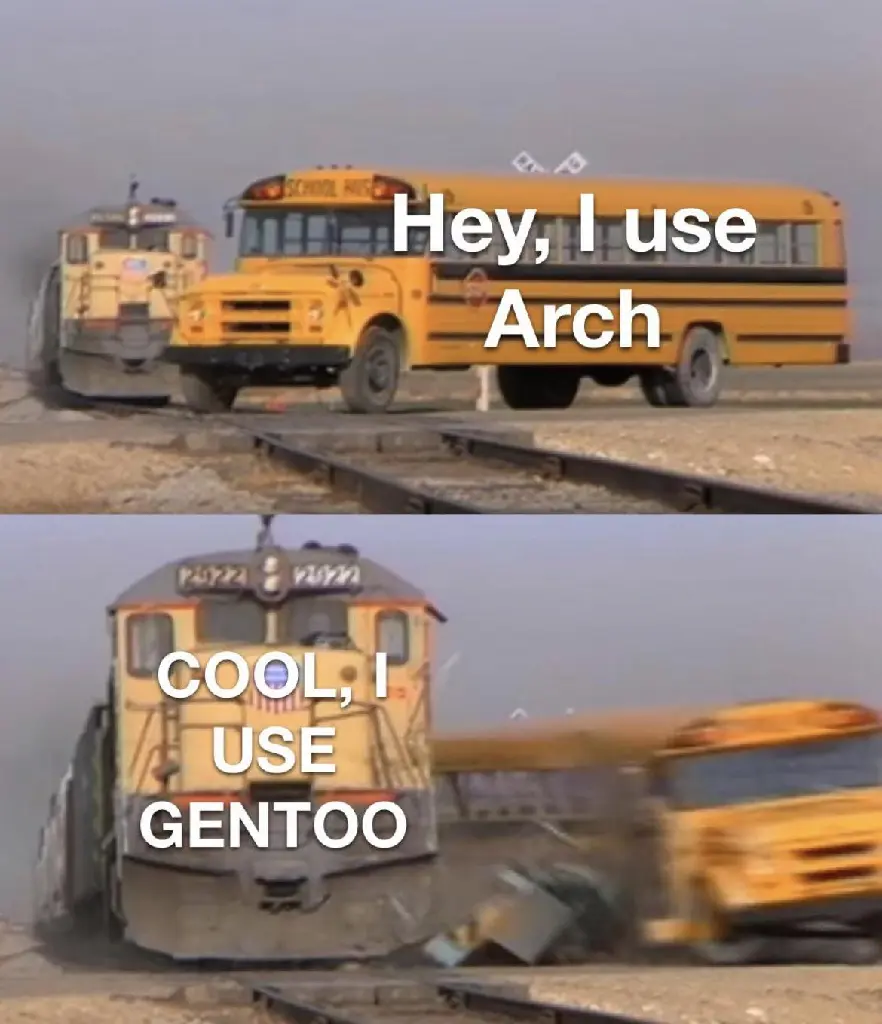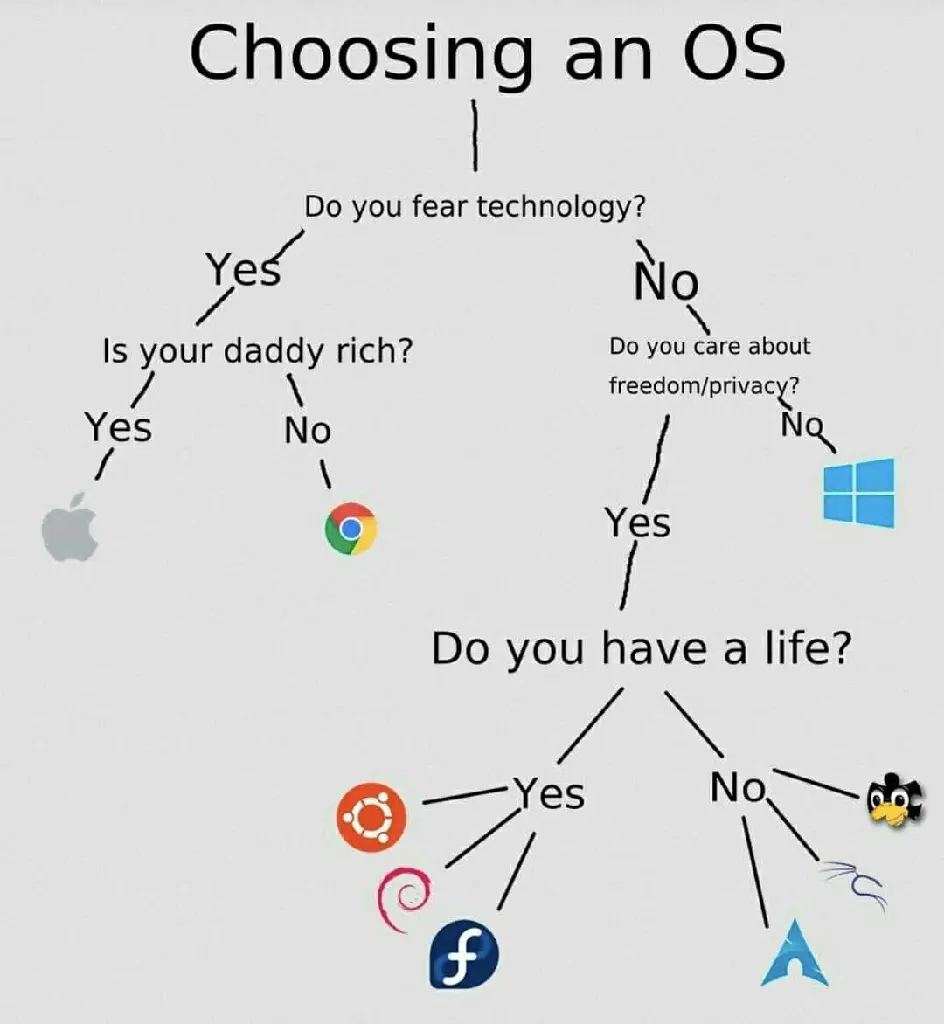I'm working on a distro recommendation flowchart/ list for newcomers and need your input please! (Post is not only this picture btw and is mainly text)
I'm working on a distro recommendation flowchart/ list for newcomers and need your input please! (Post is not only this picture btw and is mainly text)


We often get the same question with
"I'm new, what distro do you recommend?"
and I think we should make a list/ discussion on what is our pick for each person, and just link that post for them to give them an easy recommendation.
So I made a quick flow chart (will get polished as soon as I get your input) with my personal recommendations. It is on the bottom of the text, so you see the rest of the text here too.
I will also explain each distro in a few, short sentences and in what aspects they do differ and what makes them great.
Here are my "controversial" things I want to discuss with you first, as I don't want to spread nonsense:
Nobara
I don't know if we should recommend it as a good gaming distro. In my opinion, it's a highly insecure and experimental distro, made by one individual. I mean, sure, it gives you a slightly better experience ootb compared to vanilla Fedora, but:
- As said, it's made by one single guy. If he decides to quit this project, many many people will just stop getting updates.
- There are many security-things, especially SELinux, disabled.
- It's severely outdated. Some security fixes take months until they arrive on Nobara.
- It contains too many tweaks, especially kernel modifications and performance enhancers. Therefore, it might be less reliable.
I think, Bazzite is the way superior choice. It follows the same concept, but implements it in way better fashion:
- Just as up-to-date as the normal Fedora, due to automatic GitHub build actions.
- No burden of maintenence, either on the user or the dev side.
- Fully intact security measures.
- And much more.
Immutable distros
I'm a huge fan of them and think, that they are a perfect option for newcomers. They can't brick them, they update themselfes in the background, they take a lot of complexity compared to a traditional system, and much more.
Especially uBlue and VanillaOS are already set up for you and "just work".
If you want to know more about image-based distros, I made a post about them btw :)
VanillaOS
It's the perfect counterpart for Mint imo. It follows the same principle (reliable, sane, easy to use, very noob friendly, etc.), but in a different way of achiving that.
The main problems are:
- The team behind it isn't huge or well established yet, except for the development of Bottles.
- They want to do many things their own way (own package manager, etc.) instead of just using established stuff.
- The current release (V2, Orchid) is still in beta atm.
I see a huge potential in that particular distro, but don't know if I should recommend it at this point right now.
ZorinOS
I think, for people who don't like change, it's great, but it can be very outdated. What's your opinion on that distro? It looks very modern on the surface and is very noob friendly, but under the hood, very very old.
Pop!_OS
Same with that. Currently, there's only the LTS available, since System76 is currently very busy with their new DE. I don't know if we should recommend it anymore.
I made the list of recommendations relatively small on purpose, as it can be a bit overwhelming for noobs when they get a million recommendations with obscure distros.
Do you think that there are any distros missing or a bad recommendation?

